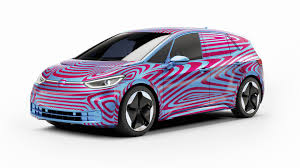Thunder Bay, Ontario–(Newsfile Corp. – September 16, 2019) – ZEN Graphene Solutions Ltd. (TSXV: ZEN) (“ZEN” or the “Company“) is pleased to announce that it has signed an agreement with Chemisar Laboratories Inc. (“Chemisar”) to provide various consulting services which will include the use of 2,300 square feet of office and laboratory space in Guelph, Ontario commencing on October 1, 2019. This office will become the company’s new graphene research and development centre which will include a small-scale graphene processing and production facility. Additional space is available in the building which will allow ZEN to grow as needed.
The new office and lab spaces are situated 66 km from Toronto Pearson International Airport and is centrally located to Toronto, Hamilton, Waterloo, London and multiple university partners. The office space is part of a larger 5,500 square foot well-equipped stand-alone technology centre which is situated on 1.15 acres. ZEN has access to a 2,000 square foot wet laboratory which has fume hoods, laboratory equipment and a large inventory of specialized glassware as well as other laboratory consumables plus a large inventory of chemical reagents. In the coming months, ZEN is aiming to setup small-scale graphite purification and graphene-related production facilities including Graphene Quantum Dots (GQD’s) and Graphene Oxide (GO). These products will be available for research and development, application development and for commercial use.
Dr. Francis Dubé commented: “This facility represents the next phase of development and scale up of our company. We now have the ability to actively collaborate with our research partners as we move toward commercial scale production. This will also allow ZEN to offer the highest value products for sale such as GQDs and GO as granted by the Ministry of Energy, Northern Development and Mines bulk sample permit.”
About Chemisar Laboratories Inc.
Chemisar and its related companies, Guelph Chemical Laboratories and Maxima Laboratories were founded by Dr. Raj N. Pandey. The main areas of research were in the Energy and Environmental fields while offering analytical laboratory services to both private enterprises and government agencies since 1978. The companies have been granted 30 various patents from their research. They also have significant experience with NRCAN, NRC, International Trade, the Ontario Ministry of Environment and Energy along with the Government and various businesses in India.
About ZEN Graphene Solutions Ltd.
ZEN Graphene Solutions Ltd. is an emerging graphene technology company with a focus on development of the unique Albany Graphite Project. This precursor graphene material provides the company with a competitive advantage in the potential graphene market as independent labs in Japan, UK, Israel, USA and Canada have demonstrated that ZEN’s Albany Graphite/Naturally PureTM easily converts (exfoliates) to graphene, using a variety of simple mechanical and chemical methods.
For further information:
Francis Dubé, Chief Executive Officer
Tel: +1 (289) 821-2820
Email: [email protected]
To find out more on ZEN Graphene Solutions Ltd., please visit our website at www.ZENGraphene.com. A copy of this news release and all material documents in respect of the Company may be obtained on ZEN’s SEDAR profile at www.sedar.ca.
















